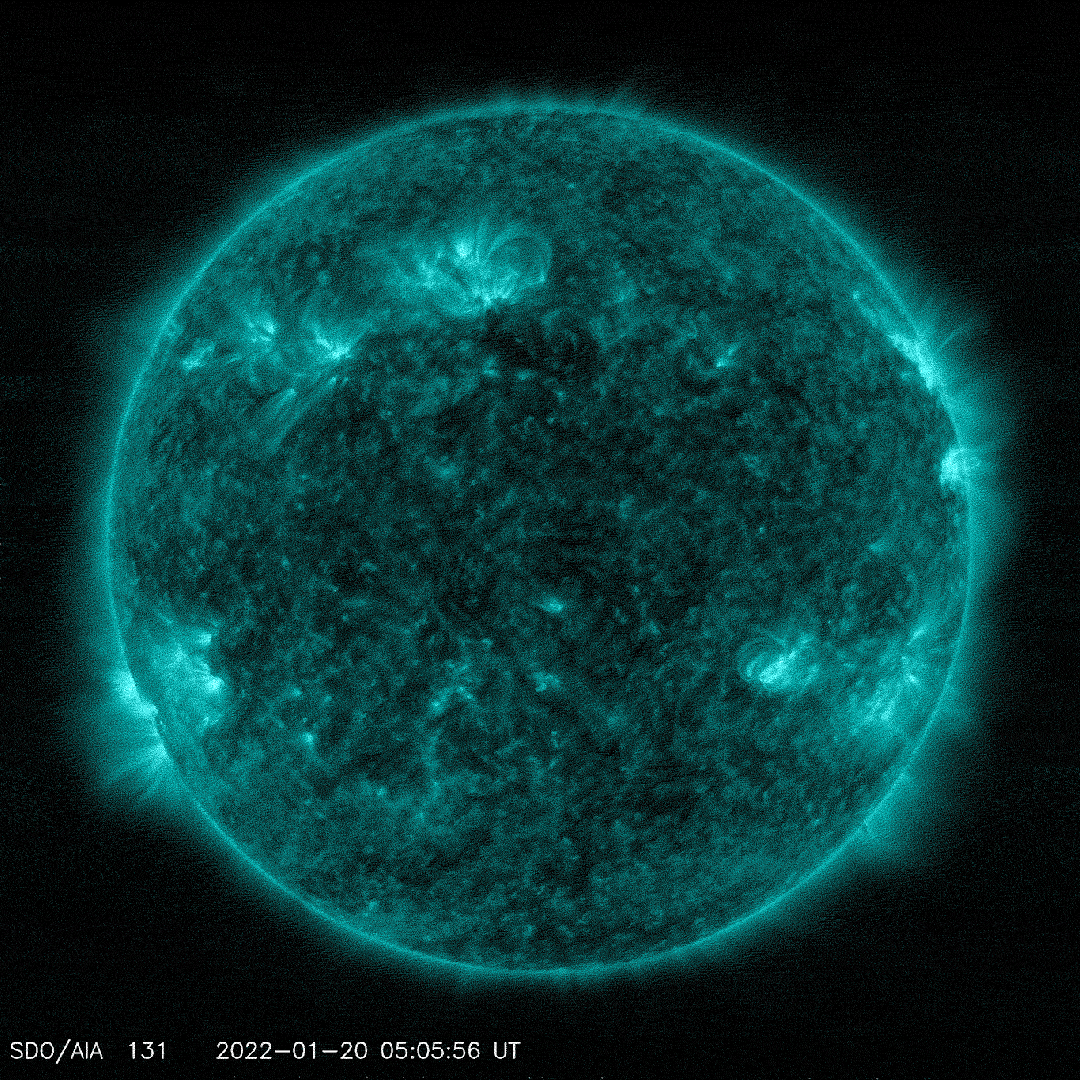NASA catches sun sending powerful flare into space
The Solar Dynamics Observatory saw the mid-level flare near the limb of the sun.
Our sun just had a medium-sized energy burp.
NASA's Solar Dynamics Observatory (SDO) caught a mid-level solar flare on Thursday (Jan. 20) with a peak at 1:01 a.m. EST (0601 GMT). You can see the flash on the limb, or edge, of the sun, thanks to SDO's powerful imaging.
Because the flare was on the sun's limb, it likely wasn't pointed squarely toward Earth. The solar flare is classified as medium or M5.5 class, powerful enough to potentially cause radio blackouts in polar regions if the flare were to hit our planet square-on.
Related: Sun outburst goes 'cannibal' as fast new blob overtakes a slower one

SDO and several other missions keep an eye on space weather, meaning activity from the sun. Flares are often accompanied by a coronal mass ejection of charged particles that can generate auroras on Earth, but the Space Weather Prediction Center from the National Oceanic and Atmospheric Administration doesn't yet forecast any meaningful solar activity on Earth.
The sun has an 11-year cycle of solar activity, and is currently in what astronomers call Solar Cycle 25. (That number refers to the cycles that have been closely tracked by scientists.)
At the peak of solar cycles, the sun has a number of sunspots on its surface, which represent concentrations of energy. As magnetic lines tangle in the sunspots, they can "snap" and generate bursts of energy such as flares.
Get the Space.com Newsletter
Breaking space news, the latest updates on rocket launches, skywatching events and more!
Solar Cycle 25's peak is a little hard to predict, but in 2020 NASA suggested we may see a peak of sunspots, solar flares and coronal mass ejections around 2025. But NASA and partner agencies do watch the sun to protect infrastructure (such as power lines) and astronauts on space missions.
"There is no bad weather, just bad preparation," Jake Bleacher, chief scientist for NASA's Human Exploration and Operations Mission Directorate, said in the 2020 agency release. "Space weather is what it is — our job is to prepare."
Follow Elizabeth Howell on Twitter @howellspace. Follow us on Twitter @Spacedotcom and on Facebook.
Join our Space Forums to keep talking space on the latest missions, night sky and more! And if you have a news tip, correction or comment, let us know at: community@space.com.

Elizabeth Howell (she/her), Ph.D., was a staff writer in the spaceflight channel between 2022 and 2024 specializing in Canadian space news. She was contributing writer for Space.com for 10 years from 2012 to 2024. Elizabeth's reporting includes multiple exclusives with the White House, leading world coverage about a lost-and-found space tomato on the International Space Station, witnessing five human spaceflight launches on two continents, flying parabolic, working inside a spacesuit, and participating in a simulated Mars mission. Her latest book, "Why Am I Taller?" (ECW Press, 2022) is co-written with astronaut Dave Williams.









